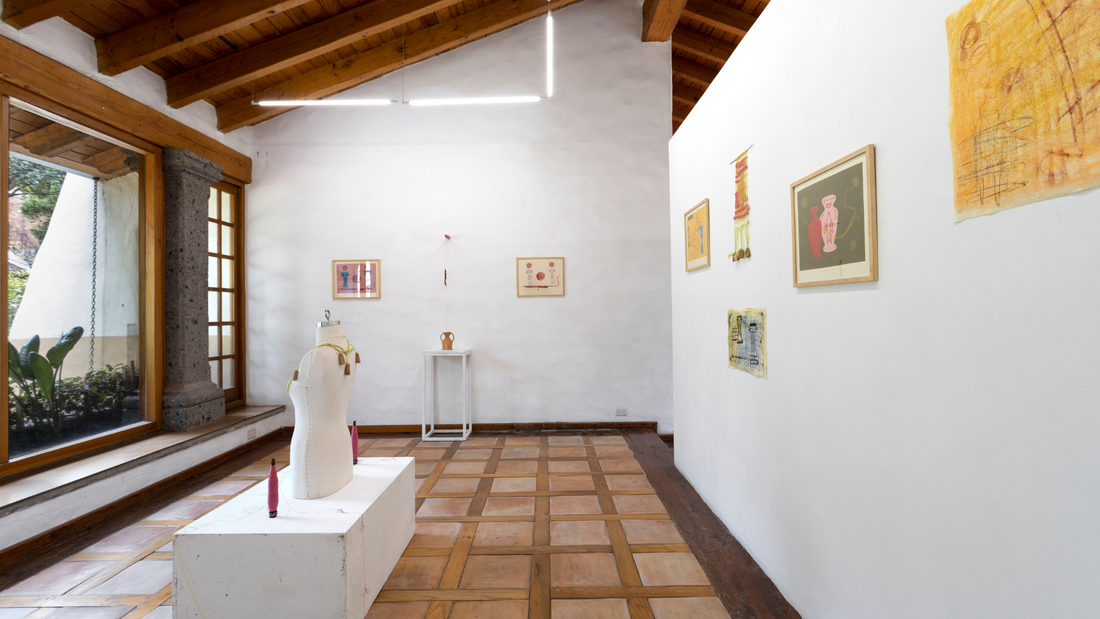A large part of my art practice straddles the boundaries between "low art" and "high art" forms. One of the hills I will die on is the need to value traditional craft forms as much as we value art found in museums. As a fiber artist I am always trying to educate customers about the skill that goes into creating my pieces. It is a constant battle to price my art high enough since the common knowledge and value of fiber art forms is so low.
Having struggled with this duality of low and high art, I have become fascinated by the historical context of "useful art" and how pieces like weavings, blankets, clothing, pillows, etc. are valued. They play such a large role in our daily lives. We constantly interact with these pieces of skilled art, yet our society does not value them in the same way that it values untouchable art such as sculptures or paintings.
I recently attended a four week artist residency at Casa Lu Sur in Mexico City. It was an amazing opportunity to start research around the ideas mentioned above. I decided to start by focusing on the role of wool-work in ancient Greece. This culminated in a solo exhibition 'Giving Weight'. I'm excited to share the images and artist statement for the show below:
. . .
“As a woman she is simultaneously creative but also destructive, powerfully chaotic and rationally ordered, and her greatest act of creativity is also one of the greatest acts of deception and cunning” (Myburgh 68).

There exists an artificial bifurcation between “high art” and “low art,” typically regarded as “craft”. When women make art that is not only creative, but also usable, it is regarded as a low art form. This body of work was made to give weight to the textile work done by women both in ancient Greece and today.
Although very few ancient Greek textile pieces have survived, anthropologists have studied ceramic vases depicting women’s wool-work to understand its significance. Weaving played a role in creating women’s self identity, statecraft and myths. I drew particularly from the story of Penelope in which she weaves a mourning cloth by day and undoes all of her work each night. This act allows her to maintain a sense of autonomy and control. Her story illustrates the constant dualities that women straddle. They must be soft, but hard. They must be creative, but not oppose. They must care for others, but not explore themselves. In the Greek myths, women are often criticized for using weaving as a way to create something in their own image. The irony lies in the evidence that the principles of wool-work were used in the vision of perfect statecraft. These principles include unity, balance, and intertwining. In this way, women inhabit another duality: transcending public and private boundaries. I propose this dichotomy can be applied to low and high art forms.
I began this collection with monoprints, which integrated small pieces of weavings and yarn as a way to physically place the material into a traditionally high art form. Using these weavings led to the addition of loom weights made from copper. I became fascinated by their shape and use. This led to the addition of small ceramic loom weights to communicate the weight of women's creative work by physically combining yarn and heavier objects. The use of copper within the pieces serves as a weight and gives the work an ornate element to convey the collection as high art.
-Hannah Via
Select pieces are available for sale. Please contact me for more pictures and further information.






